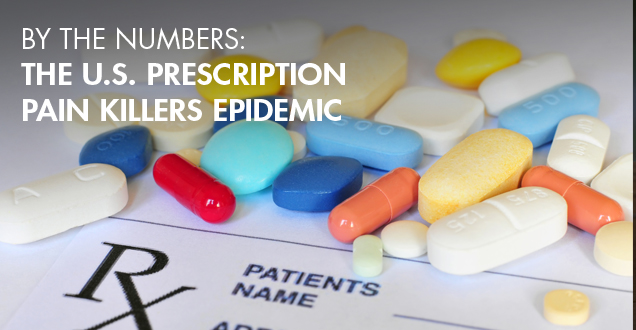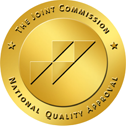
Did you know more Americans now die every year from drug overdoses than they do in motor vehicle crashes?
Prescription drug abuse and heroin use have taken a heartbreaking toll on too many Americans and their families. Sadly, the United States is currently in the midst of a prescription opioid overdose epidemic.
Addressing the public health issue, President Obama has recently proposed $1.1 billion in new funding to help combat the prescription pain medication addiction and heroin use epidemic.
Read on to discover how prescription pain medication abuse and addiction is one of the nation’s top health challenges.
The Rise of Prescription Painkillers
From 1999 to 2014, the rate of overdose deaths involving opioids nearly quadrupled. According to the U.S. Health and Human Services, in 2014, more than 28,000 people died from an opioid overdose and at least half of those deaths involved a prescription opioid (U.S. Health and Human Services).
As you can see from information gathered by the Center for Disease Control, many Americans abused or became addicted to prescription or illegal opioids in recent years:
- From 1999 to 2014, more than 165,000 people died from an overdose related to prescription opioid pain medication.
- In 2014, almost 2 million Americans abused or became dependent on prescription opioids.
- In 2014, over 60% of drug overdose deaths involved an opioid.
- In 2013, healthcare providers wrote 249 million prescriptions for opioid pain relievers. That’s enough for every American adult to have their own bottle of pills.
- Every day, over 1,000 people are treated in emergency departments for misusing prescription opioids.
- Every day, 78 people in the United States die because of prescription overdoses.
- 25% of people who receive prescription opioids long-term for non-cancer pain in primary care settings struggle with addiction.
- 60% of adults prescribed opioid painkillers have leftover pills.
Sharp Increase in Heroin-Related Deaths
Heroin-related deaths have also increased sharply, more than tripling since 2010. In 2014, more than 10,500 people died from heroin. The CDC reports that among new heroin users, nearly 40% have abused prescription opioids prior to using heroin. This is most likely a result of prescription pain medication abusers turning to heroin.
When people addicted to prescription opioids have difficulty getting prescription pain medication, it drives them to heroin because it is more accessible on the street. The increased availability, lower cost, and increased purity of heroin has been identified as possible contributors to rising rates of heroin use and overdose in the U.S.
What Causes Prescription Pain Medication Addiction?
There are some risk factors that can make some patients vulnerable to abuse and overdose, such as:
- Obtaining overlapping prescriptions from multiple providers and pharmacies.
- Taking high daily dosages of prescription pain relievers.
- Having previous mental illness or a history of alcohol or other substance abuse.
The biggest risk of prescription pain medication is the euphoric effect it can produce which attracts abuse. In any form, opioids attach to opioid receptors in our brain. These receptors not only regulate pain but also affect functions of the brain that produce pleasure. The longer and more consistently the drugs are used, the more likely it is that dependence grows and chances of opioid abuse can increase in order to achieve the euphoric feeling.
In time, withdrawal symptoms become overwhelming and the impulse to seek prescription pain medication in greater quantity and doses just to feel “normal” again grows stronger. Ultimately, taking too many prescription pain medications can lead to overdose or death.
An Increase in Painkiller Prescribing Is a Key Factor
Prescription opioids are typically prescribed following surgery, injury, or insufferable pain associated with late-stage cancer. In recent years, there has been a dramatic increase in the acceptance and use of prescription opioids for the treatment of chronic, non-cancer pain despite serious risks and the lack of evidence about their long-term effectiveness.
Notably, research shows inappropriate prescribing practices and opioid prescribing rates are substantially higher among Medicaid patients than among privately insured patients. To help alleviate the problem, the Centers for Disease Control and Prevention recently issued guidelines for prescribing opioids for chronic pain as part of an effort to push doctors to prescribe pain medications responsibly, such as lower dosages and shorter time-periods (Centers for Disease Control and Prevention).
The U.S. Food and Drug Administration announced that immediate-release opioid painkillers such as oxycodone and fentanyl will now have to carry a “black box” warning (the FDA’s strongest) about the risk of abuse, addiction, overdose, and death.
Knowing More About the Damaging Effects of Prescription Painkillers
When it comes to prescription medication, it can be easy to assume that because a doctor directed you to take them, the medication must not be seriously dangerous. Somehow, medical drugs are less dangerous than illicit drugs, despite the identical effects of both drugs. Following this logic, one can assume, “If one drug is good, then two must be better, and three won’t be too bad if I’m feeling stronger pain.”
This type of mentality is dangerous for anyone with prescription pain medication to adopt, not just for the patient, but friends and family as well.
According to the CDC, those who are at highest risk of overdose get opioids in several ways:
- 27% obtain a prescription from their doctor
- 26% from friends or relatives for free
- 23% buying from friends or relatives
- 15% buying from a drug dealer
Most people who abuse prescription opioids get them for free from a friend or relative and those at highest risk of overdose are nearly four times more likely than the average user to buy the drugs from a dealer or other stranger.
How Can You Prevent Prescription Pain Medication Abuse?
Although prescription opioids can help manage some types of pain, as more data is being studied, it appears there is not enough evidence that opioids improve chronic pain, function, and quality of life. Moreover, among other factors, long-term use of prescription pain relievers for chronic pain can put patients at risk to develop dependence, drug abuse, and reach overdose at higher dosages.
There are several ways to help prevent opioid abuse:
- Avoid taking prescription painkillers more often than prescribed. Use Prescription Drug Monitoring Programs (PDMPs) if available.
- Get rid of medications properly as soon as treatment is done, and avoid keeping prescription painkillers around “just in case.”
- Help prevent misuse and abuse by not selling or sharing prescription drugs with anyone.
- Tell your doctor if you have a history of addiction.
- Ask your doctor about alternative pain treatment.
If you or a someone you know is struggling with opiate addiction or prescription pain medication, do not wait to seek professional help. Casa Palmera can help. Using a combination of cognitive behavioral groups, individual psychotherapy, and holistic adjunctive treatment techniques, we can guide you on the path towards a healthier and happier life.




